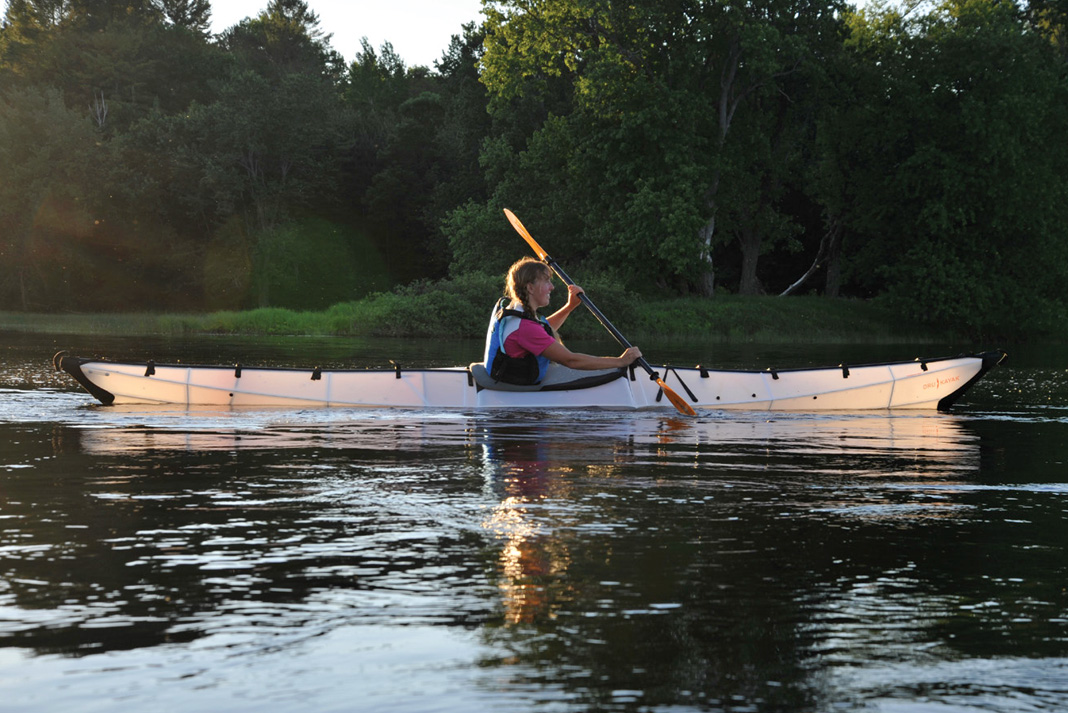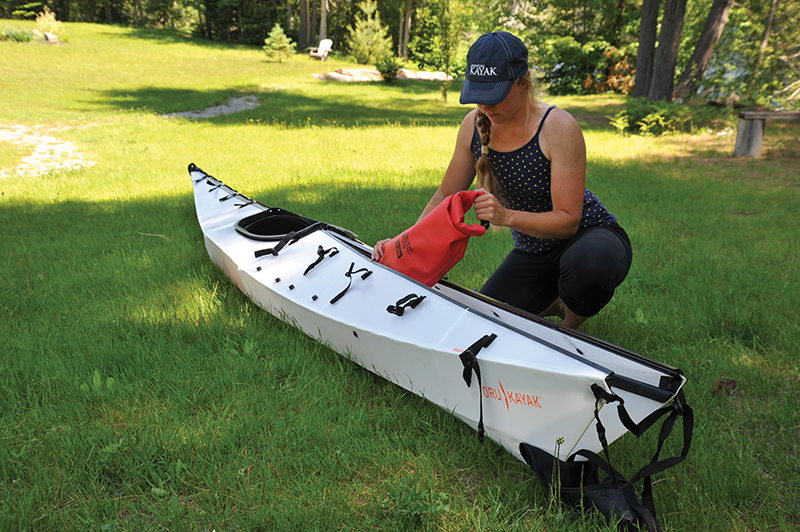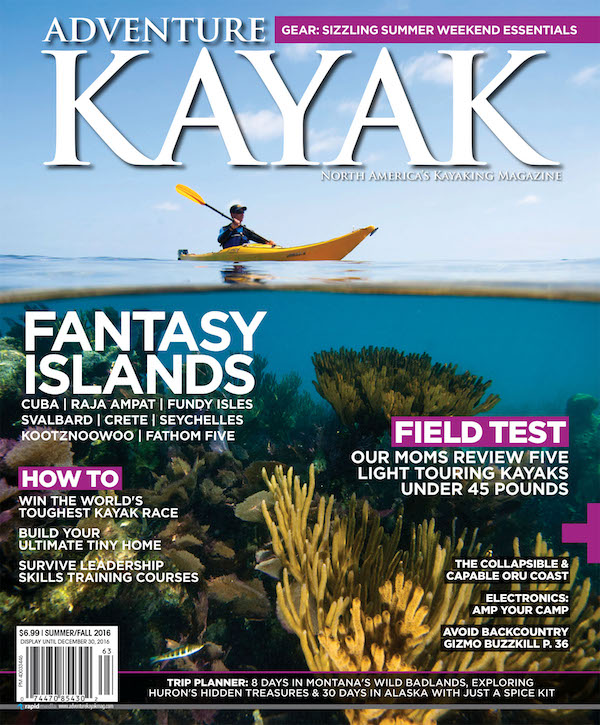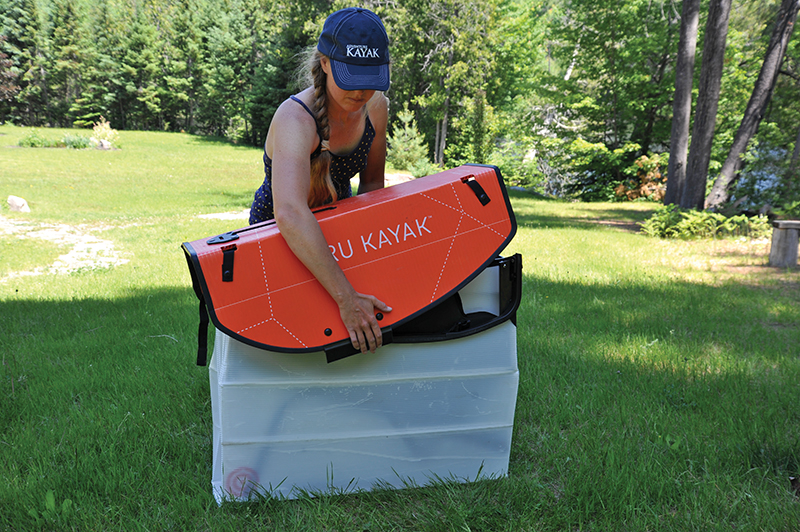Two years ago, we reviewed the original Oru Kayak, an award-winning marvel of engineering from California architect, designer and paddler Anton Willis and partner Ardy Sobhani.
The name Oru comes from origami, the traditional Japanese art form that inspired this novel folding kayak’s design. Launched in 2012 through a wildly successful Kickstarter campaign, the Oru was funded in its first day on the popular crowdfunding site. The pair ultimately went on to pre-sell more than 500 boats, raising $444,000 towards their production facility near San Francisco Bay. Less than three years later, they were at it again with a new Kickstarter sensation: the Coast, a 16-foot model aimed at avid touring kayakers.
Like its predecessor, the Coast exceeded its $40,000 fundraising goal in the first eight hours, and garnered over $356,000 before the campaign closed. The new boat hit the water late last year, with its model upgrade, the Coast+, shipping early 2016. Together with the original, 12-foot Oru—rebranded as the Bay and premium Bay+—and the new Beach, a stable recreational kayak aimed at beginners, the Oru range now includes five distinct models.
The names are more than just savvy marketing; they suggest to users where these boats are best suited—by the beach, in sheltered bay waters, or exploring the open coast. Oru says the Coast is engineered for rough water and multi-day trips with greater speed, stability, storage and tracking than its little sister—a claim we were keen to put to the test.
We requested the premium Coast+ but after waiting impatiently for a hand-off from a Manhattan business magazine, we eagerly unboxed the boat and discovered our demo was a standard Coast model. What’s the difference? For an extra $500, the Coast+ features hardware upgrades including ratcheting buckles rather than webbing clips along the deck closure seams; a small day hatch behind the cockpit for little essentials; and a more deluxe seat and performance outfitting upgrades like perimeter decklines and adjustable thigh braces to assist with rescues, edging and rolling.
Early prototypes of the Coast+ also featured a folding hatch for easier access to gear storage, but after extensive testing and tweaking, Oru’s engineers had to concede defeat. Until an adequately waterproof hatch design emerges, access to the 180 liters of storage space is through unclipping the center deck seams.

Performance-wise, the Coast and Coast+ share the same hard-chine hull and straight-tracking rocker profile. They also use the same basic construction: a single 5mm sheet of corrugated, double-walled polypropylene (reminiscent of signboard) that’s cut and creased just like origami to fold from a 30-inch-square suitcase into a full-size, hard-shell kayak. The material is lightweight yet strong, rated to 20,000 fold cycles—that’s a lot of day trips.
Fans of the original Oru will love the Coast. With four additional feet of waterline, it’s about 15 percent faster on the water—perfect for after-work or early morning fitness paddles. The extra length also translates to double the gear storage—impressive considering the Coast packs down to nearly the same size (just two inches wider when folded).
Paddled empty or loaded for a multi-day adventure, handling is predictable and edging feels stable and responsive. We also like the surprisingly stiff feeling of the hull. This makes the Coast an efficient choice for longer tours and reasonably agile for playing among currents and rocks.
There’s no denying the appeal of an expedition-ready kayak that can strap to your back or be checked onto a plane for anywhere-in-the-world adventures. Add to that the Coast’s speedy set-up, and those with limited storage space also have a great grab-and-go option for journeys closer to home. VIRGINIA MARSHALL
Step 1
Practice assembly and disassembly at home before hitting the trail. Deciphering the origami can be confusing for first-timers and requires a specific sequence that penalizes missed steps with back-to-the-beginning frustrations.
Step 2
After a few practice runs, we had assembly down to the advertised 10 minutes. This also helps wear in the creases—they develop memory from repeated folding, so set-up and teardown become easier with use.

Step 3
Use bow and stern flotation bags (or pack the ends with dry bags) when heading into open water. Oru’s bulkheads only provide rigidity to the hull, they don’t seal out water.
Coast
Length: 16 ft
Width: 25 in
Weight: 31 lbs
Max. Capacity: 400 lbs
Price: $1,975 www.orukayak.com

Subscribe to Paddling Magazine and get 25 years of digital magazine archives including our legacy titles: Rapid, Adventure Kayak and Canoeroots.





